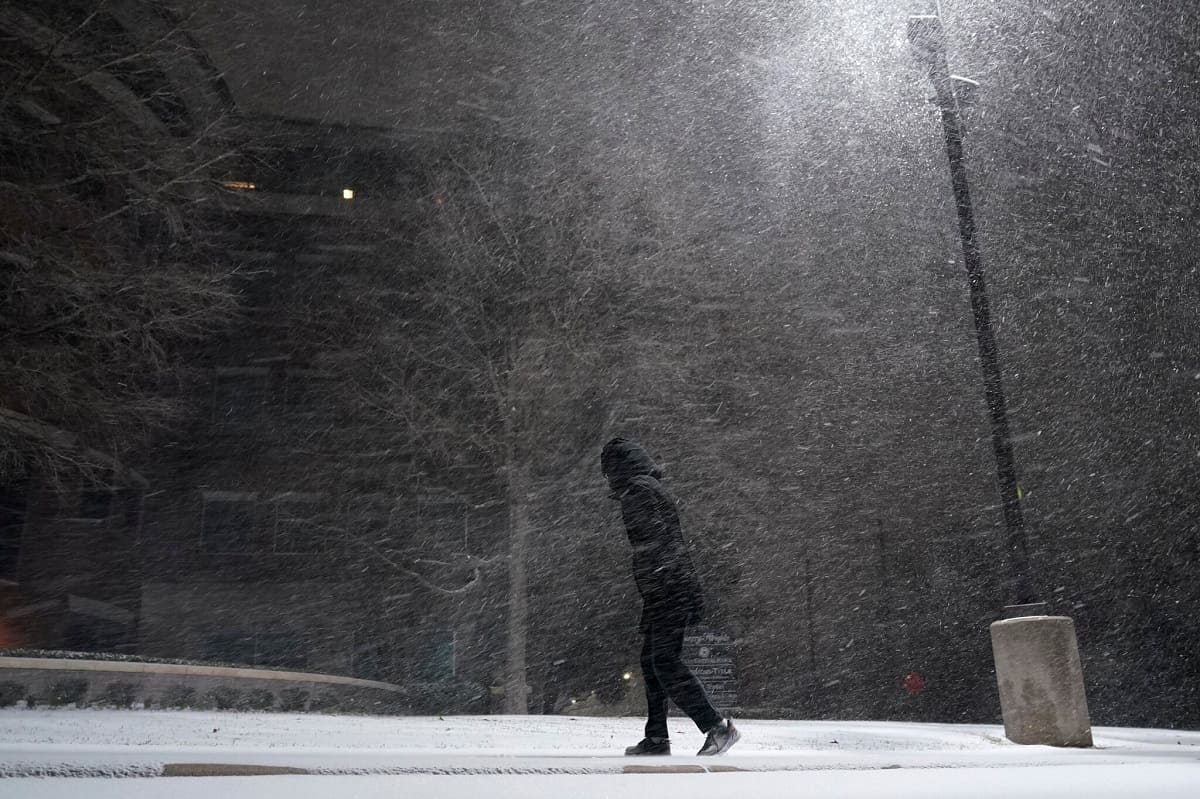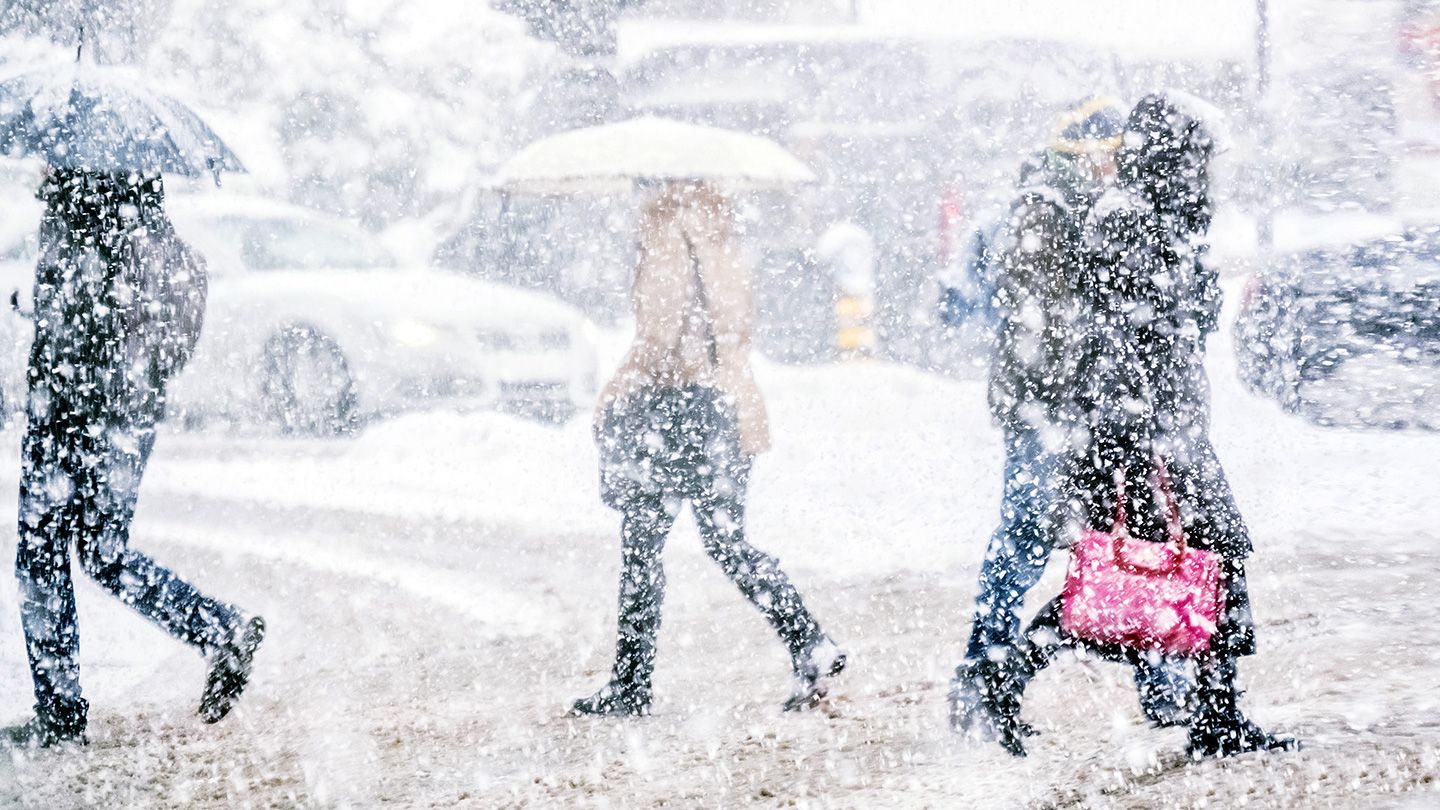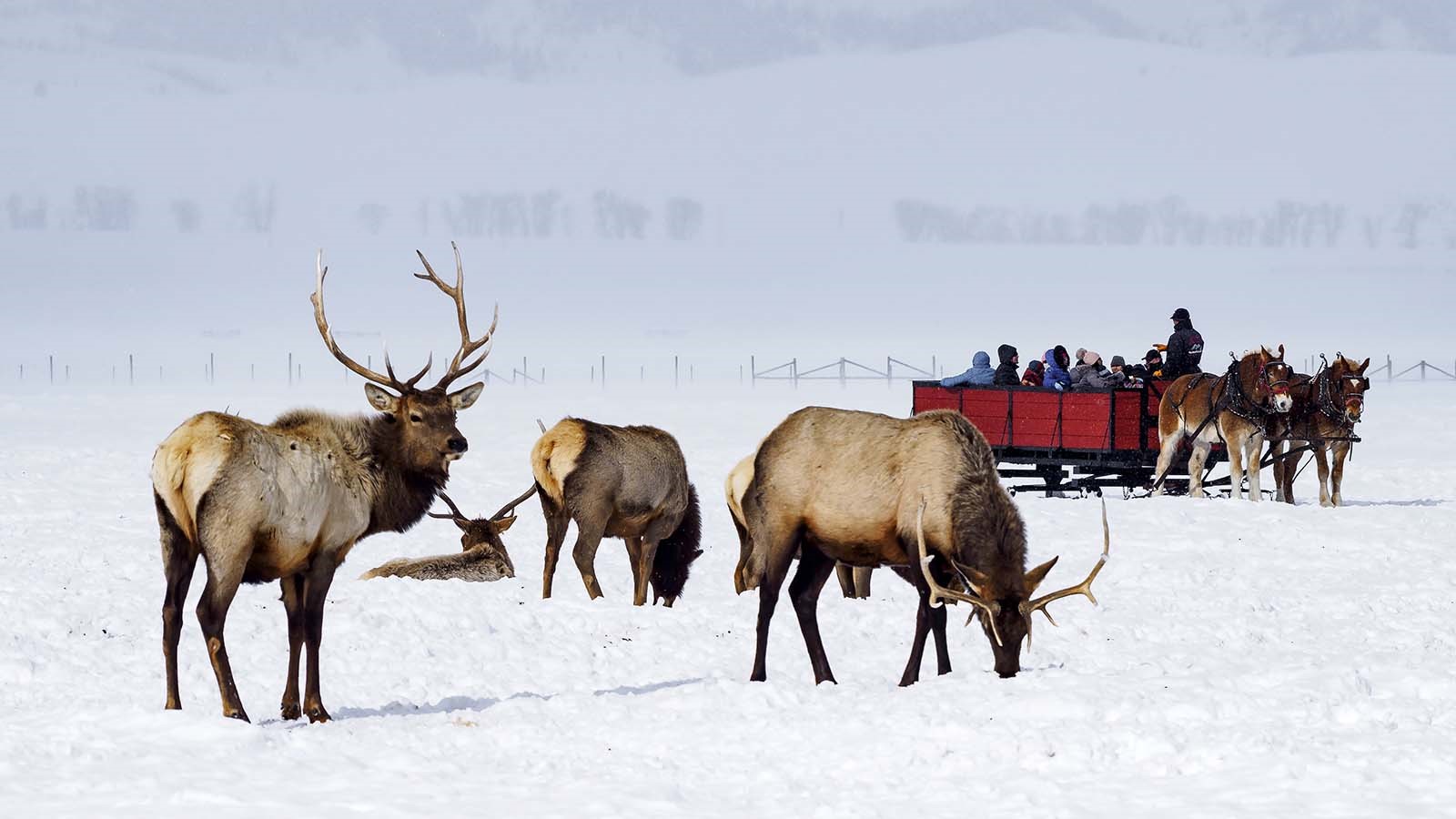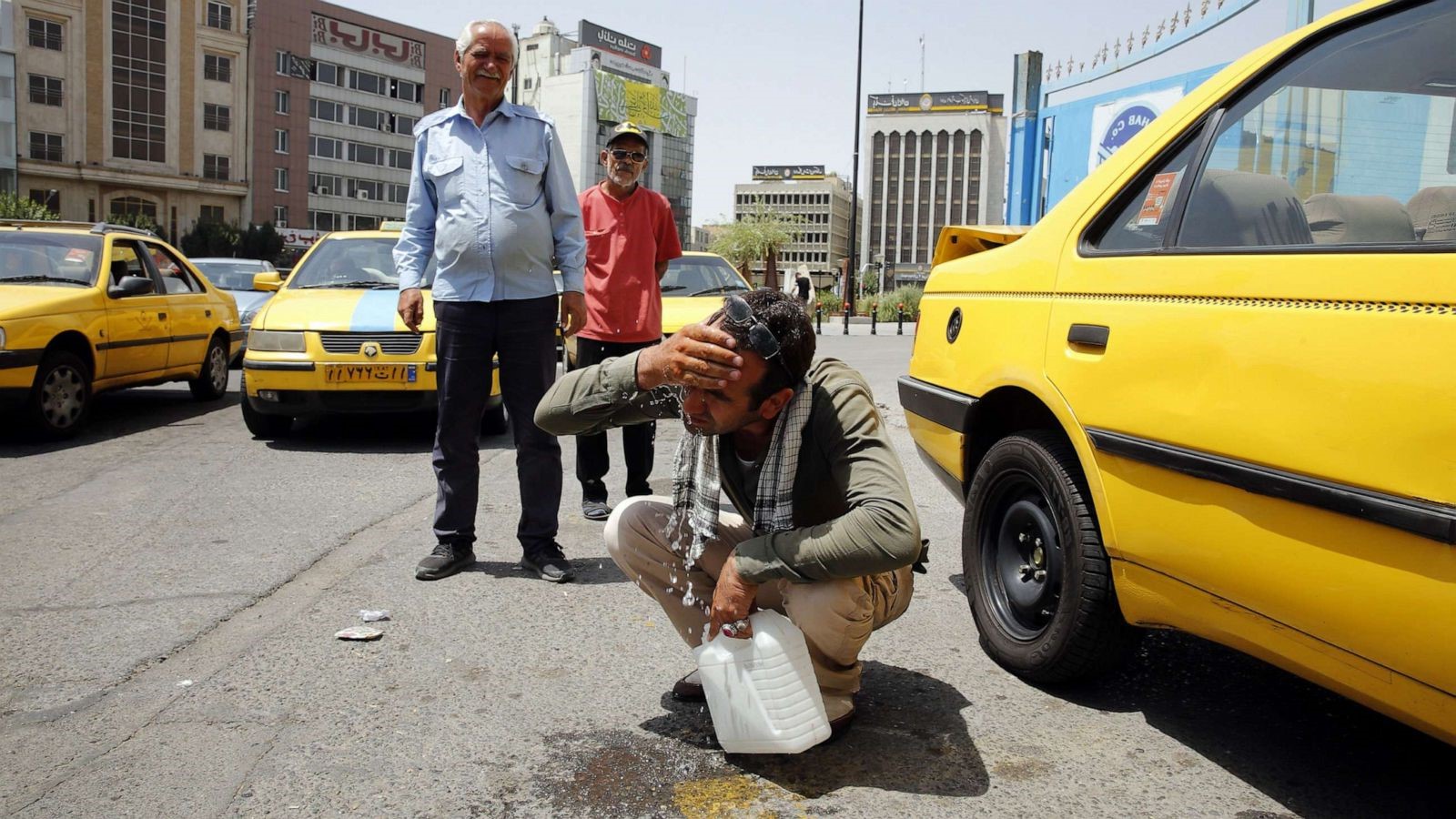Home>Health & Nutrition>The Dangers Of Cold Temperatures For Humans: Understanding The Threshold


Health & Nutrition
The Dangers Of Cold Temperatures For Humans: Understanding The Threshold
Published: February 19, 2024
Learn about the health risks associated with exposure to cold temperatures and how it impacts human well-being. Understand the threshold for maintaining good health and nutrition in cold weather.
(Many of the links in this article redirect to a specific reviewed product. Your purchase of these products through affiliate links helps to generate commission for Temperatures.com, at no extra cost. Learn more)
Table of Contents
Introduction
Cold temperatures can have a profound impact on the human body, affecting everything from circulation and metabolism to overall well-being. As the mercury drops, our bodies must work harder to maintain a stable internal environment, often leading to various health challenges. Understanding the effects of cold exposure and the associated risks is crucial for safeguarding our health and well-being during chilly weather.
In this comprehensive guide, we will delve into the intricate relationship between cold temperatures and the human body. By exploring the physiological responses to cold, the potential health risks, and the threshold at which cold exposure becomes hazardous, we aim to equip readers with valuable insights to navigate the challenges posed by low temperatures.
Join us as we unravel the mysteries of how cold weather impacts our bodies and discover the precautions and safety measures that can help mitigate the potential dangers. Let's embark on a journey to comprehend the intricate dance between humans and cold temperatures, empowering ourselves with the knowledge needed to stay healthy and safe in chilly climates.
The Impact of Cold Temperatures on the Human Body
Cold temperatures can exert a profound influence on the human body, triggering a cascade of physiological responses as it strives to maintain internal equilibrium. When exposed to cold environments, the body undergoes a series of intricate adjustments to conserve heat and sustain vital functions. Understanding these responses is pivotal in comprehending the impact of cold temperatures on human health.
Circulatory System
One of the primary effects of cold temperatures on the human body is the constriction of blood vessels, a mechanism aimed at minimizing heat loss. As the skin and peripheral tissues experience cooling, blood vessels narrow to reduce blood flow to the skin's surface, thereby conserving heat for essential organs. This vasoconstriction can lead to a rise in blood pressure as the heart works harder to maintain adequate circulation.
Metabolism
In cold environments, the body's metabolic rate often increases to generate additional heat. This heightened metabolic activity is fueled by the breakdown of stored energy reserves, such as glycogen and fat, to produce warmth. Consequently, individuals may experience an increase in appetite as the body demands additional fuel to sustain its internal temperature.
Respiratory System
Cold air can pose challenges to the respiratory system, particularly for individuals with pre-existing conditions such as asthma. When inhaling cold air, the airways may constrict, potentially triggering respiratory discomfort and exacerbating breathing difficulties. Additionally, the body expends energy to humidify and warm the inhaled air, placing an added burden on the respiratory system.
Read more: The Impact Of Cold Weather On The Human Body
Musculoskeletal System
In cold temperatures, muscles may contract and stiffen, leading to reduced flexibility and agility. This can heighten the risk of musculoskeletal injuries, especially during physical activities or exertion in cold weather. Furthermore, the body may prioritize heat conservation over muscle function, potentially impacting overall physical performance.
Thermoregulation
The body's ability to regulate its internal temperature is paramount for survival in cold conditions. Through shivering and non-shivering thermogenesis, the body generates heat to counteract the cold environment. Shivering, a rapid muscle contraction and relaxation, serves as a mechanism to produce heat, while non-shivering thermogenesis involves the activation of brown adipose tissue to generate warmth.
Understanding the intricate interplay between cold temperatures and the human body is essential for safeguarding health and well-being in chilly climates. By comprehending these physiological responses, individuals can adopt informed measures to mitigate the potential impact of cold temperatures and ensure their safety and comfort.
Understanding the Threshold of Cold Exposure
The threshold of cold exposure refers to the point at which the human body's ability to maintain its core temperature is compromised, leading to potential health risks. This threshold is influenced by various factors, including ambient temperature, wind chill, humidity, and individual characteristics such as age, health status, and clothing insulation. Understanding this threshold is crucial for gauging the potential dangers posed by cold environments and implementing appropriate precautions.
The concept of the cold exposure threshold is closely linked to the body's thermoregulatory mechanisms. When exposed to cold temperatures, the body initially responds by constricting blood vessels, activating shivering, and increasing metabolic activity to generate heat. These adaptive responses enable the body to maintain its core temperature within a narrow range, typically around 98.6°F (37°C).
However, as the ambient temperature drops, the body's ability to counteract heat loss becomes increasingly challenged. Prolonged exposure to cold conditions can overwhelm the body's thermoregulatory capacity, leading to a gradual decline in core temperature. This decline may eventually reach a critical point where the body's vital functions are compromised, culminating in hypothermia, frostbite, or other cold-related injuries.
The threshold of cold exposure varies among individuals and is influenced by factors such as age and overall health. Infants, elderly individuals, and those with pre-existing medical conditions are particularly vulnerable to the effects of cold temperatures, as their thermoregulatory systems may be less efficient in maintaining core temperature. Additionally, inadequate clothing, prolonged immobility, and wet conditions can significantly lower the threshold of cold exposure, heightening the risk of cold-related injuries.
Understanding the threshold of cold exposure empowers individuals to make informed decisions when venturing into cold environments. By recognizing the interplay of environmental factors and individual susceptibility, individuals can gauge the potential risks posed by specific cold conditions and take proactive measures to safeguard their well-being. Whether engaging in outdoor activities, commuting in wintry weather, or facing cold-related occupational hazards, a nuanced understanding of the cold exposure threshold is instrumental in mitigating the potential dangers and ensuring a safe and comfortable experience in chilly climates.
In summary, the threshold of cold exposure represents the critical point at which the body's ability to maintain core temperature is compromised, leading to potential health risks. By considering environmental factors and individual characteristics, individuals can gain valuable insights into the potential dangers posed by cold temperatures and adopt appropriate measures to protect themselves from cold-related injuries and discomfort.
Health Risks Associated with Cold Temperatures
Exposure to cold temperatures poses a myriad of health risks, ranging from mild discomfort to life-threatening conditions. Understanding these risks is paramount for safeguarding well-being in chilly environments. Below, we delve into the potential health hazards associated with cold temperatures, shedding light on the diverse challenges that individuals may encounter.
Hypothermia
Prolonged exposure to cold environments can lead to hypothermia, a condition characterized by a dangerous drop in core body temperature. As the body loses heat faster than it can produce it, vital functions are impaired, leading to symptoms such as shivering, confusion, slurred speech, and drowsiness. Severe hypothermia can result in cardiac arrhythmias, respiratory failure, and ultimately, death. Infants, elderly individuals, and those with compromised health are particularly susceptible to hypothermia.
Frostbite
Frostbite occurs when skin and underlying tissues freeze due to cold exposure, leading to tissue damage and potential necrosis. Extremities such as fingers, toes, nose, and ears are especially vulnerable to frostbite. Symptoms include numbness, tingling, discoloration, and the formation of ice crystals in the affected areas. Severe frostbite can result in tissue loss and long-term complications, necessitating prompt medical attention and appropriate rewarming techniques.
Cold-Induced Asthma
For individuals with asthma, cold air can trigger bronchospasms and exacerbate respiratory symptoms. Inhalation of cold, dry air can lead to airway constriction and inflammation, causing coughing, wheezing, and shortness of breath. Cold-induced asthma can pose significant challenges during winter months, necessitating proactive management and preventive measures to minimize respiratory distress.
Cardiovascular Strain
Cold temperatures can exert strain on the cardiovascular system, particularly in individuals with pre-existing heart conditions. Vasoconstriction, increased blood pressure, and heightened cardiac workload are common responses to cold exposure, potentially precipitating cardiovascular events such as angina, heart attacks, and arrhythmias. Individuals with cardiovascular risk factors should exercise caution in cold environments and adhere to appropriate preventive measures.
Read more: Understanding Cold Weather And Its Impact
Immune Suppression
Prolonged exposure to cold temperatures may compromise the immune system, rendering individuals more susceptible to respiratory infections and other illnesses. Cold weather can dampen immune responses, making individuals more vulnerable to viral and bacterial pathogens. Adequate protective measures, including proper clothing and hygiene practices, are essential for minimizing the risk of cold-related infections.
Musculoskeletal Injuries
Cold temperatures can increase the risk of musculoskeletal injuries, including strains, sprains, and falls. Reduced muscle flexibility, impaired coordination, and icy surfaces contribute to a heightened risk of physical injuries during cold weather. Engaging in appropriate warm-up exercises, wearing supportive footwear, and maintaining vigilance in icy conditions can help mitigate the risk of musculoskeletal injuries.
By recognizing these health risks associated with cold temperatures, individuals can take proactive measures to safeguard their well-being in chilly environments. Whether engaging in outdoor activities, commuting in wintry weather, or facing cold-related occupational hazards, a comprehensive understanding of these risks empowers individuals to adopt preventive strategies and mitigate the potential dangers posed by cold temperatures.
Precautions and Safety Measures for Cold Weather
When braving cold weather, it is essential to prioritize safety and well-being by implementing a range of precautions and measures to mitigate the potential risks associated with low temperatures. By adopting proactive strategies, individuals can safeguard themselves from cold-related injuries and discomfort, ensuring a safe and comfortable experience in chilly environments.
Dressing Appropriately
Proper attire is paramount for protecting against cold weather. Layering clothing allows for better insulation and flexibility in adjusting to fluctuating temperatures. The innermost layer should wick moisture away from the skin, the middle layer should provide insulation, and the outer layer should shield against wind and moisture. Additionally, wearing a hat, gloves, and insulated footwear helps retain body heat and protect extremities from frostbite.
Monitoring Exposure Time
Limiting exposure to cold environments is crucial, especially during extreme weather conditions. Monitoring the duration of outdoor activities and seeking shelter when necessary can prevent overexposure and reduce the risk of hypothermia and frostbite. Additionally, scheduling outdoor activities during the warmest parts of the day and taking regular breaks indoors can help maintain body temperature and minimize cold-related health hazards.
Hydration and Nutrition
Staying adequately hydrated and nourished is essential for supporting the body's thermoregulatory mechanisms. Consuming warm, calorie-dense foods and beverages can provide the energy needed to sustain internal warmth. Additionally, staying hydrated helps maintain circulation and cellular function, contributing to overall resilience in cold weather.
Cold-Weather Gear and Equipment
For individuals engaging in outdoor activities or working in cold environments, appropriate gear and equipment are indispensable. This includes insulated tents, sleeping bags, and heating devices for outdoor enthusiasts, as well as thermal protective clothing and gear for workers exposed to cold conditions. Ensuring that gear is in good condition and suitable for the prevailing weather is critical for minimizing cold-related risks.
Emergency Preparedness
Being prepared for unforeseen circumstances is vital when venturing into cold environments. Carrying emergency supplies such as blankets, first-aid kits, and signaling devices can provide a safety net in case of unexpected challenges. Additionally, familiarizing oneself with cold-related injury symptoms and appropriate response protocols is essential for prompt and effective intervention.
Environmental Awareness
Understanding the specific environmental conditions and forecasts is crucial for making informed decisions in cold weather. Monitoring weather updates, wind chill factors, and potential hazards such as icy surfaces or blizzards enables individuals to adapt their plans and take necessary precautions. Being mindful of environmental cues and changes in weather patterns enhances safety and minimizes the risk of cold-related incidents.
By embracing these precautions and safety measures, individuals can fortify themselves against the potential dangers of cold weather, ensuring a secure and enjoyable experience in chilly environments. Whether engaging in recreational activities, commuting in wintry conditions, or working in cold climates, a proactive approach to safety and well-being is instrumental in mitigating the risks associated with low temperatures.
Conclusion
In conclusion, the impact of cold temperatures on the human body is multifaceted, encompassing physiological responses, health risks, and the critical threshold of cold exposure. As we navigate the complexities of cold weather, it becomes evident that understanding these dynamics is pivotal for safeguarding our well-being and ensuring a safe and comfortable experience in chilly environments.
The intricate interplay between cold temperatures and the human body unveils a tapestry of adaptive mechanisms and potential vulnerabilities. From vasoconstriction and heightened metabolic activity to the risks of hypothermia, frostbite, and respiratory challenges, the effects of cold exposure underscore the importance of informed precautions and proactive measures.
By comprehending the threshold of cold exposure, individuals can gauge the potential dangers posed by specific environmental conditions and tailor their actions accordingly. This nuanced understanding empowers us to make informed decisions when venturing into cold environments, whether for work, recreation, or daily activities.
Moreover, recognizing the diverse health risks associated with cold temperatures enables us to adopt preventive strategies and prioritize safety. From dressing appropriately and monitoring exposure time to staying hydrated and being environmentally aware, these measures form a comprehensive framework for mitigating the potential dangers of cold weather.
As we embrace these insights and precautions, we equip ourselves with the knowledge and tools needed to navigate the challenges of cold temperatures effectively. By prioritizing safety, well-being, and environmental awareness, we can embrace the beauty of winter while safeguarding ourselves from its potential hazards.
In essence, the relationship between humans and cold temperatures is a delicate dance, requiring a harmonious blend of understanding, preparedness, and respect for nature's elements. By embracing these principles, we can embark on our cold-weather endeavors with confidence, resilience, and a deep appreciation for the intricate balance between humans and the chill of winter.










